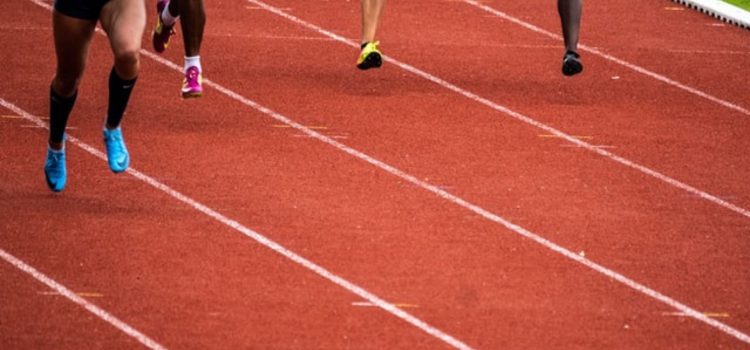

This article is an excerpt from the Shortform book guide to "The Sports Gene" by David Epstein. Shortform has the world's best summaries and analyses of books you should be reading.
Like this article? Sign up for a free trial here .
Why are Kenyans so good at distance running? Is Kenyan running dominance a matter of superior genetics?
The statistics on Kenyan running dominance are impressive, and they certainly suggest a naturally superior running ability in Kenyan marathoners. However, Kenyans are not the only runners with body types ideally suited for distance running. According to David Epstein, the author of The Sports Gene, motivation—not just genetics—is a key component of Kenyan runners’ excellence.
Here is what makes Kenyans exceptional in the sport.
Kenyan Runners and Exceptional Motivation
While traits such as long slender legs, thin lower legs, and altitude adaptations are more common in the Rift Valley than in other parts of the world, that does not mean that they are unique to Kenya. Epstein cites a paper in the European Journal of Applied Physiology comparing running economies (a measure of how biomechanically efficient runners are) between elite Kalenjin runners and elite European marathoners with the same finishing time (2:08). The study found that the running economies between groups were too similar to explain Kenyan running dominance.
Epstein cites this study as an example of how both nature and nurture together create elite athletes. He notes that, although they would be the exception rather than the rule, there are plenty of people with similar body types to Kenyan runners in other countries. However, there are far fewer athletes with the combination of the “ideal” body type and Herculean motivation to train outside of Kenya. Epstein cites three reasons for this exceptional motivation:
- Poverty: Epstein notes that the average income in Kenya is $800 per year. This means that the prize money from winning a large marathon would be a fortune for the average Kenyan runner, and even winning a local or regional race could mean more money than athletes would otherwise earn in a year.
- Inclusive training philosophy: Epstein describes an open training culture in the Kalenjin population. He notes that elite athletes often train alongside aspiring runners, who will drop in on training sessions to see how they compare. Additionally, aspiring Kenyan runners are often young adults coming into the sport for the first time. Epstein notes that Kenyan runners believe that if someone has the talent and puts in the work, age is not an obstacle.
| Age and Endurance Up to age 50, non-elite marathon runners often do not slow down, and may even continue to speed up. An article in The Guardian cites statistics showing that non-elite male and female marathoners in their 40s ran faster than marathoners in their 20s. The article cites a different mentality that comes with age as part of the explanation, noting that older runners are more patient, more relaxed, and more experienced than younger athletes. That age-related wisdom can trump physical prowess is another reason to take findings of specific genes and sports performance as simply a small piece of a large puzzle. |
- Early “training”: One study showed that 81% of elite Kenyan runners were from poor families and had to walk or run to school. This walking served as a form of early training, giving walkers a 30% higher aerobic capacity than students who did not have to walk to school. The same research showed that the top runners had to walk six miles, sometimes more, to school every day.
- This trend held true in the Oromo population in Ethiopia, with runners who succeeded in the marathon having walked or run farther to school each day than those who excelled at shorter races. (Anecdotal evidence from elite runners who made a significant amount of money by racing shows that their children did not continue their running legacy, likely because they are able to take a car to school.)
| Kalenjin Runners and Exceptional Mental Toughness An NPR article highlighting the success of Kalenjin runners offers an additional culturally-based explanation for why Kalenjin runners are so successful. The article proposes that in addition to physiological advantages, athletes from this tribe are conditioned to have an exceptionally high pain tolerance. According to the article, learning to tolerate pain is an important part of growing up in the Kalenjin tribe. The article describes pain ceremonies as a rite of passage where teenagers prove their mental toughness to the rest of the tribe. Highlighted elements of the ceremony include crawling through a tunnel of stinging nettles, being beaten, and being circumcised with a sharp stick. During some of these proceedings, participants wear a mask of dried mud on their faces. They are expected to remain stoic throughout, and if the mud cracks from wincing they are labeled as a “coward” by their communities. After the ceremony and before wounds are healed, participants are expected to run instead of walk wherever they go, with the idea being that they need to learn to run through the pain. In a sport such as the marathon, where athletes push themselves through discomfort for hours, high pain tolerance is a clear advantage. The article notes that pain ceremonies are likely to become far less common as the tribe becomes more modernized. However, the cultural value of toughness in the face of pain can still be passed down without these rituals. |
While the answer to why Kenyans dominate distance running to such a degree is neither finalized nor simple, we can say that the combination of an “ideal” body type for their sport, the ideal altitude scenario for an athlete, a training regimen that began in childhood (whether or not it was recognized as such), a culture which normalizes running aspirations regardless of age or experience, and exceptional motivation can all help to explain Kenyan dominance in distance running events. Since none of these factors alone can account for their success, Epstein uses Kenyan runners as a perfect example of a combination of nature and nurture creates elite athletes.

———End of Preview———
Like what you just read? Read the rest of the world's best book summary and analysis of David Epstein's "The Sports Gene" at Shortform .
Here's what you'll find in our full The Sports Gene summary :
- A look at how our genes play a determining role in our success in sports
- Why practice doesn't always guarantee success
- The fortuitous gene pairings that can lead to elite athleticism






